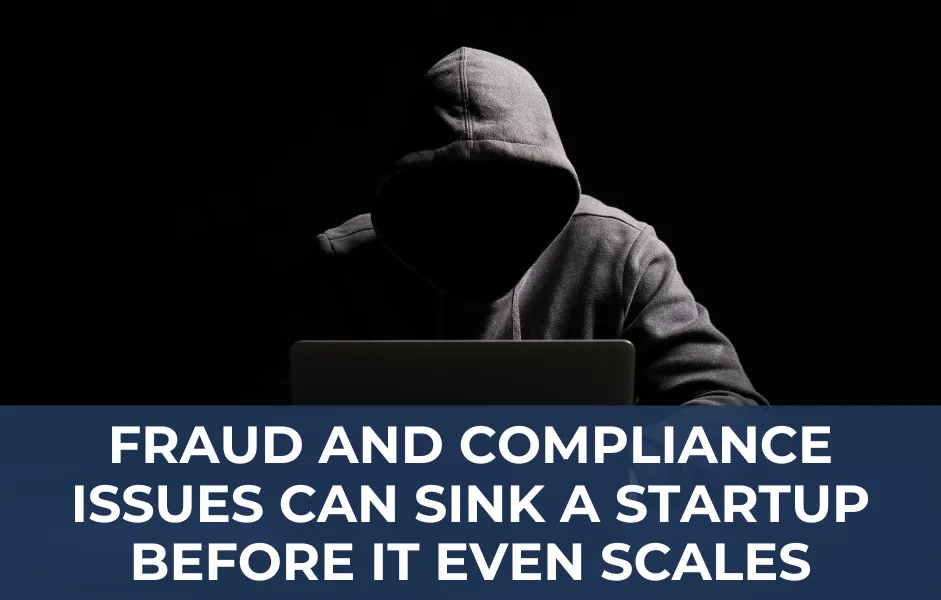Blog
Master Your Finances: Essential Accounting Tips for Business Growth

How Startups Can Prevent Fraud & Stay Compliant Through Technology
Fraud and compliance issues can sink a startup before it even scales.
The positive news: technology now makes it significantly easier to identify potential risks early.
However, over-reliance on automation can create blind spots.
Here are the key considerations every startup should keep in mind:
Start With Risk Assessment
Before implementing any tools, conduct a thorough risk assessment to identify your specific vulnerabilities. This ensures you invest in technology that addresses your actual needs rather than adopting solutions that don’t match your risk profile.
Pitfall: Rushing to implement technology without understanding your unique risks can leave critical gaps in your control environment.
AI-Powered Fraud Detection
AI-driven systems like Feedzai analyze transaction patterns, flagging suspicious activities instantly. These tools detect duplicate payments, unusual vendor invoices, and potential fraud attempts—without human bias.
For example, the U.S. Department of the Treasury's Office of Payment Integrity used AI to prevent and recover over $4 billion in fraud and improper payments in fiscal year 2024—a significant increase from the previous year.[1]
Pitfall: AI is only as good as the data it's trained on. If your system lacks historical fraud data, it might miss sophisticated fraud schemes. Also, AI-driven systems can sometimes produce false positives, leading to unnecessary investigations and operational inefficiencies.

Real-Time Compliance Monitoring
Regulatory compliance isn’t a once-a-year task. Platforms like Vanta and Drata provide real-time tracking of security and financial controls, ensuring startups stay compliant with SOC 2, GDPR, and other regulations. These platforms continuously monitor your systems, providing alerts for any deviations from compliance standards.
Pitfall: Automated compliance tools don’t replace human oversight. Regulations change, and software alone won’t catch every update or nuance. A dedicated compliance team is essential for interpreting and implementing regulatory changes correctly.
Automated Internal Controls
Set up automated workflows in accounting software like QuickBooks or NetSuite to prevent unauthorized transactions. Features like role-based access, approval workflows, and audit trails reduce human errors and fraud risks.
By restricting access based on roles, you minimize unauthorized transactions, while audit trails provide a clear record of all financial activities for review.
Pitfall: Over-automating approvals can lead to complacency. If no one manually reviews flagged transactions, fraud can still slip through. Regular manual audits are necessary to complement automated controls.
Document Your Control Processes
Technology implementation alone isn’t enough. You need to document how these tools fit into your overall control framework. Well-documented procedures demonstrate to auditors and regulators that you have a systematic approach to compliance and fraud prevention.
Pitfall: Undocumented controls may be inconsistently applied and difficult to verify during audits. Lack of documentation can lead to misunderstandings and misapplications of control procedures.
Invest in Staff Training
Even the best technology can’t replace well-trained employees. Regular training on fraud recognition, compliance requirements, and proper use of technological tools creates a human firewall that complements your digital safeguards.
Employees are often the first line of defense against fraud, and their vigilance can prevent potential issues before they escalate.
Pitfall: Without proper training, staff may circumvent controls or miss warning signs that technology alone can’t detect. Untrained employees can become the weakest link in your fraud prevention strategy.

Consider Emerging Technologies Like Blockchain
For some startups, especially those handling sensitive financial transactions, blockchain technology offers immutable transaction records that can’t be altered or tampered with.
The blockchain for fraud prevention market is projected to reach $77.6 billion by 2034, growing at a CAGR of 26.5%, showing a major shift toward blockchain adoption for security purposes. [2]
Pitfall: Blockchain implementation can be expensive and complex. Evaluate whether this technology aligns with your specific risk profile and resources before investing. Additionally, integrating blockchain with existing systems may require significant changes to your current infrastructure.
The Bottom Line
Technology is a game-changer for fraud detection and compliance, but it’s not foolproof.
The key is to combine automation with human oversight—review flagged transactions, stay updated on regulations, and don’t assume AI catches everything.
A balanced approach ensures that your startup remains vigilant against fraud while maintaining compliance in a rapidly evolving technological landscape.
[1] Department of Treasury, Treasury Announces Enhanced Fraud Detection Processes, Including Machine Learning AI, Prevented and Recovered Over $4 Billion in Fiscal Year 2024 | U.S. Department of Treasury
[2] Market.US, Global Blockchain for Fraud Prevention Market (Jan 2025), https://market.us/report/blockchain-for-fraud-prevention-market/
Copyright 2022 - RNB Capital LLC - All Rights Reserved

